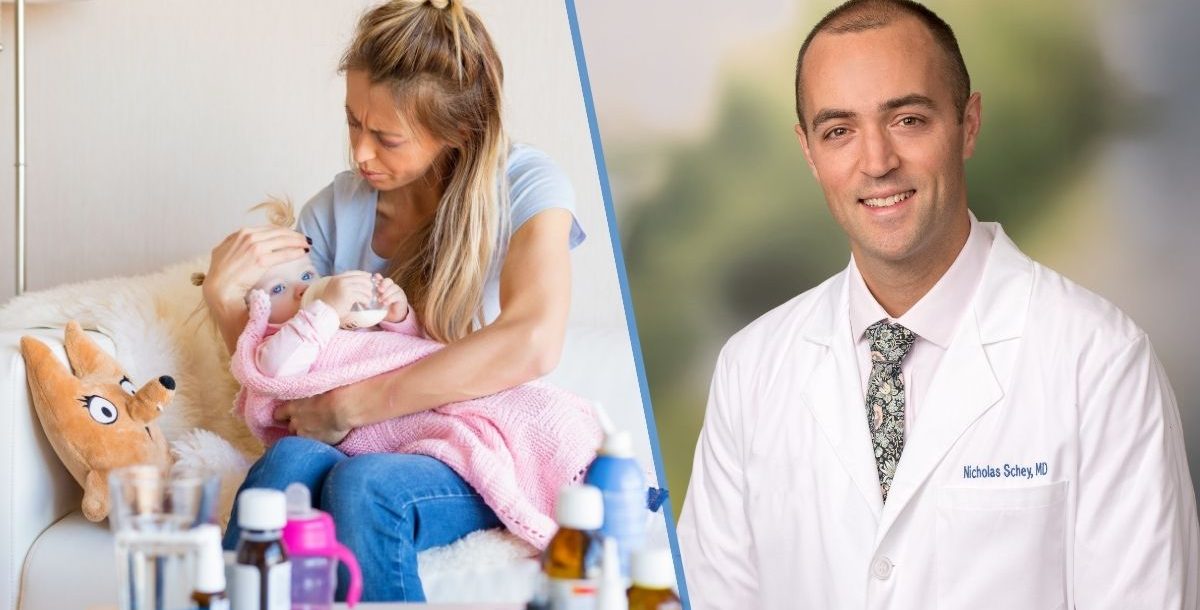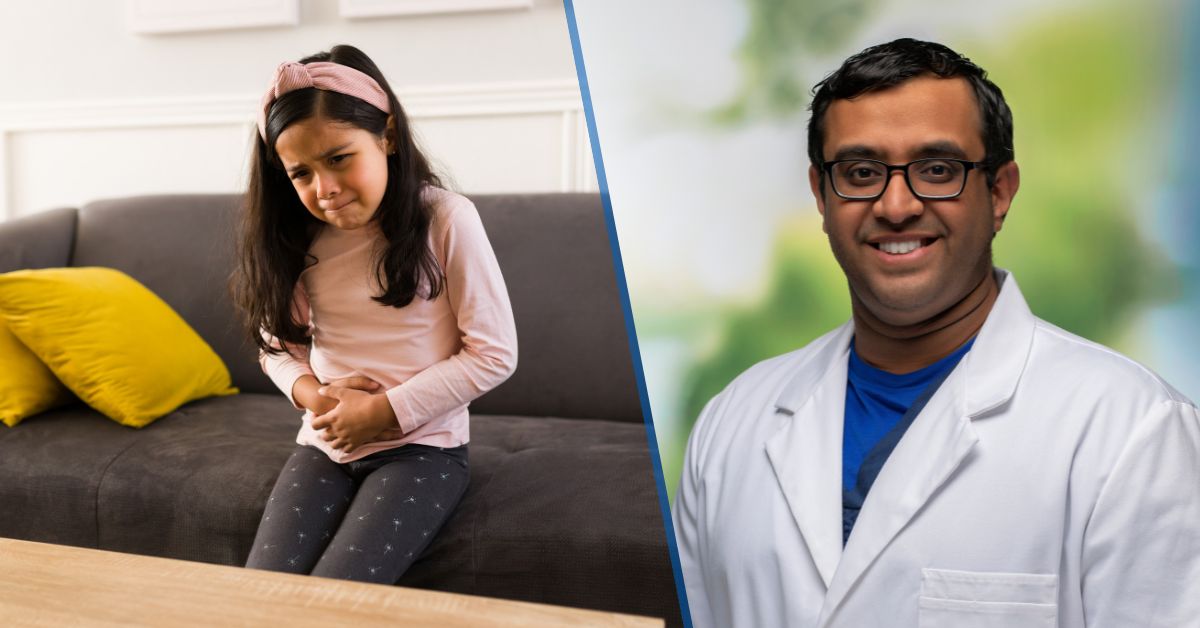The following piece was written by Nicholas Schey, MD, a pediatrician at Bon Secours Pediatrics of Mechanicsville.
Since the onset of winter and cold season it seems hard to browse social media or a news outlets without seeing a headline relating to RSV, also known as respiratory syncytial virus. And for good reason – last year was one of the worst for RSV on record, and there are multiple new products available this season to help protect against RSV.
Hopefully, armed with the information in this article, you can avoid panicking when you get that seemingly inevitable call from your child’s preschool that they were exposed to RSV.
Is RSV as scary as it’s cracked up to be?
While RSV can potentially be dangerous, the vast majority of babies that acquire RSV will have a mild illness and recover fully. Around 1 to 2 percent of babies with RSV require hospitalization, which means that at least 98 percent will have a milder illness.
Almost all babies that are hospitalized due to RSV recover fully as well. The highest risk for more severe illness is in very young infants, infants born prematurely and those with underlying health problems.
RSV is one of dozens of viruses that affect the respiratory tract. These viruses are commonly referred to as “cold viruses,” usually infecting the nose, throat and larger air passages in the chest and causing a cold or flu-like illness. They are sometimes called upper respiratory infections, or URIs.
In rare cases these viruses can travel lower into the respiratory tract and affect the lungs, sometimes called lower respiratory tract infections, or LRTIs, occasionally causing more serious illness.
Because of differences in the shape of their air passages and in their immune systems, young children and infants are particularly susceptible to a specific type of LRTI called bronchiolitis. This is different from bronchitis, which is more common in older people. Many cold viruses can cause bronchiolitis, but RSV is the most likely to do so. In fact, about 20 percent of younger children in hospitalized for LRTIs have RSV.
How do I know if my child has RSV, and what should I do?
The symptoms of RSV are the same as those of other cold viruses. These include cough, nasal congestion, runny nose, fever, pink eye, vomiting and diarrhea. In fact, the only way to distinguish RSV from other cold viruses is by testing, which is done through a nasal swab similar to a COVID test.
However, as with most cold viruses, there is no specific treatment available for RSV, so in many cases a test is not necessary. In fact, if your child is breathing and drinking well, and not having fevers, you may be able to just monitor them at home. If you have any doubts, however, you should always consult with your pediatrician.
The main reasons for hospitalization due to an RSV infection are respiratory distress and dehydration. Therefore, if you see the following signs you should seek care right away:
- For respiratory distress: Rapid breathing, chest or belly forcefully moving with breaths, flaring of the nostrils or sucking in of the skin between the ribs during breaths (retractions)
- For dehydration: Decreased urinating combined with pale skin, dry mouth, sunken eyes, lethargy or listlessness
Fever is not dangerous in itself, but any infant under 2 months of age with a fever (100.4 or higher) should be taken to an emergency room right away to evaluate for a serious underlying infection. For older children, consider scheduling an appointment with the pediatrician if you’re worried, your child is very fussy or if fever lasts more than a day or two.
Should my baby get a vaccine against RSV?
There are two new products on the market specifically for kids to help prevent RSV disease in children:
- The RSV vaccine (brand name AbrysvoTM): This is the first-ever approved traditional vaccine against RSV. Like all vaccines, it works by stimulating the body’s immune system to be able to fight off the real infection if it is exposed.The RSV vaccine is not given directly to infants, as it’s been difficult for scientists to develop an RSV vaccine the works well in an infant’s young immune system. Rather, when given to a pregnant woman at the right time of pregnancy, the mother creates antibodies that pass to the infant and provide protection for the first few months of life, when the risk is highest.
- Nirsevimab (brand name BeyfortusTM): This treatment contains already-formed antibodies against RSV. Thus, it is not technically a “vaccine” in the traditional sense, and the protection it provides is usually shorter-lived than a traditional vaccine. Scientists refer to this type of treatment as a “passive immunization.”Nirsevimab is recommended for any baby from birth to 8 months old whose mother did not receive the RSV vaccine, as soon as possible during their first RSV season (October to March). One dose provides protection for the entire season.
As with any immunization, these are not 100 percent protective against RSV, but they are very effective in preventing serious disease. Nirsevimab appears to decrease the chance of hospitalization due to RSV by about 80 percent, which is very effective for an immunization.
Both also appear to be extremely safe in the millions of people that received them in the studies prior to their approval, and since their approval last year.
So, which option is best for your baby?
Both new products seem to be equally effective, so you should strongly consider whichever mother or baby have the opportunity to get. Receiving both doesn’t seem to increase protection, so at this point, experts are recommending one or the other.
How do I get an RSV immunization?
If you are pregnant, you should ask your obstetrician if they have the RSV available.
For babies whose mothers did not receive the RSV vaccine, the best bet for getting nirsevimab will be your pediatrician’s office. It can be given immediately after birth in the hospital, but most hospitals are not offering the medication currently.
Unfortunately, the maker of nirsevimab has struggled to keep up with the high demand for the product, so there are shortages still as of January of 2024. Contact your pediatrician’s office to find out if they have it, or know where to get it, and consider getting the RSV vaccine in pregnancy if you have the opportunity.
Here’s wishing you and your family a healthy and safe winter season, with many more snowball fights than sniffles!
Learn more about the pediatric services we provide at Bon Secours.
Want more advice from Dr. Schey? Watch this video of him discussing fevers in children.





